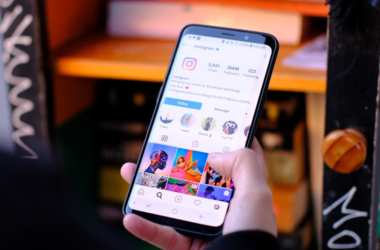This article was first published in 2023 and was last updated June 27, 2025.
- Tension: We crave meaningful retail interactions—but treat novelty as a substitute for substance.
- Noise: Tech demos get mistaken for business models, and immersion gets mistaken for intimacy.
- Direct Message: Immersive retail only works when it deepens the shopper’s identity, not distracts from it.
Read more about our approach → The Direct Message Methodology
In October 2023, when L’Oréal launched its AR mirror experience at their Champs-Élysées flagship and Walmart expanded its virtual store via Roblox, marketers called it the next frontier.
Immersive retail promised what e-commerce couldn’t: touch, texture, and emotion.
Now, in June 2025, we’re seeing the aftershocks of those early experiments.
Some brands elevated the in-store journey into something unforgettable. Others got lost in the fog of innovation theater.
The stakes? A hybrid future where physical presence must do more than provide inventory.
It must create belonging, surprise, and signal alignment with who the shopper sees themselves becoming.
But here’s the deeper challenge: Immersion isn’t inherently meaningful. In fact, the race to “wow” may be hiding a failure to connect.
What is immersive retail, really?
At its core, immersive retail is about engaging multiple senses in a space that responds to customer behavior. It can involve:
- Augmented reality (AR) or virtual reality (VR)
- Smart mirrors or gesture-activated displays
- Audio-reactive environments
- RFID-triggered product storytelling
- Game-based discovery journeys
- Real-time co-creation or customization
It’s not about tech for tech’s sake, it’s about turning stores into stages and customers into co-actors.
According to Forbes (October 2024), 71% of shoppers would frequent stores more if they implemented AR, with Gen Z and Millennials driving that shift in expectation.
But by early 2025, that preference has matured. Novelty alone no longer drives foot traffic. Shoppers now look for experiences that feel “tailored,” “purposeful,” or “relaxing”, not just interactive.
One standout example is Canada Goose’s Cold Room, which lets you test jackets in -10°C simulated snow before you buy. Another is Nike Rise in Seoul, which connects your online Nike activity to the store’s content dynamically.
These aren’t gimmicks—they’re embodiments of identity.
Why this goes deeper than retail design
So what’s really at stake? It’s not just store upgrades. It’s a shift in how brands are expected to engage human experience.
When people walk into a store now, they aren’t just browsing. They’re making meaning. They’re testing whether this brand belongs in their life narrative.
In an age when AI recommends what we watch, buy, and believe, the physical retail space is one of the few places where attention isn’t abstract—it’s embodied.
And embodiment matters. It creates memory.
But memory isn’t just triggered by spectacle. It’s triggered by alignment.
When a space feels congruent with our sense of self—aspirational, safe, expressive—we remember it.
Immersive retail must evolve from being a series of digital flourishes to becoming emotionally resonant experiences.
Otherwise, it becomes a flashy detour rather than a deep connection.
What gets in the way
We’re currently bombarded with media praising “experiential” spaces as the answer to footfall.
But in practice, a lot of brands are still deploying shallow tech demos that prioritize entertainment over meaning.
Here’s what’s creating the disconnect:
1. The trend cycle trap
Brands copy each other’s installations without translating them into brand relevance. A VR ski simulator in a skincare store might be fun—but does it connect to your promise?
2. Digital echo chambers
Retail marketers read the same case studies and chase what’s buzzworthy on LinkedIn. As a result, many “immersive” launches look like they were designed for social media virality, not for sustained customer impact.
3. Conflating sensory with strategic
Too many activations focus on wow-factor without designing for why. There’s a difference between being impressed and being moved.
The Direct Message
Immersive retail only works when it deepens the shopper’s identity, not distracts from it.
What this mean going forward
If you’re a marketer, strategist, or creative director shaping retail futures, here’s the shift:
From interactivity to intentionality
Don’t ask: “What cool tech can we add to our space?”
Ask: “What emotional or existential question is our customer asking when they walk through our door and how can we help them answer it?”
That’s not lofty, it’s practical. Here’s how it plays out:
- A home goods store could use scent diffusers to create mood zones: energizing, calming, nostalgic—linked to memory, not just fragrance.
- A fashion label might let customers generate looks based on mood boards they build on a digital canvas—activating creativity, not just personalization.
- A bookstore might invite visitors to write anonymous confessions that are projected (with consent) into a gallery, turning reading into reflection.
Design for integration, not exhibition
The best immersive experiences don’t announce themselves. They belong to the space. They make the shopper feel like they’re discovering something, not being targeted.
An excellent case in point: Erewhon Market in LA isn’t packed with screens—but it feels immersive because everything from lighting to music to staff dialogue is choreographed for vibe cohesion.
That’s low-tech immersion—but high-intent presence.
Build for ritual, not just recall
In 2025, what people want from stores isn’t just a memory—it’s a ritual. A place they choose to re-enter not because of discounts or novelties, but because it affirms something within them.
As retail futurist Doug Stephens puts it:
“The store is media. It’s the most powerful, immersive media channel a brand owns.”
Final thought
We don’t need more experiences. We need more anchoring.
In a time of digital blur, a meaningful space—designed to reflect who we are and who we’re becoming—isn’t just memorable. It’s magnetic.
That’s the future of immersive retail.
Not just tech-rich. Identity-rich.






